Character Themes
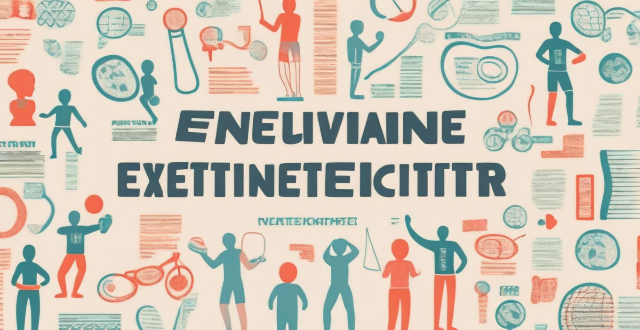
How does sports influence literary creation ?
The influence of sports on literary creation is explored in this article. Sports have provided writers with motivation and inspiration, introduced themes and characters, contributed to realism and atmosphere, and served as a vehicle for social commentary. Examples from various literary works are given to illustrate these points.

What role does sports play in the development of character in literature ?
In literature, sports often serve as a metaphor for life and can play a significant role in the development of character. This is because sports provide a framework for exploring themes such as competition, teamwork, perseverance, and overcoming adversity. Here are some ways in which sports can shape characters in literature: - **Competition**: Sports can motivate characters to strive for excellence and push their limits. Rivalries between characters can create tension and conflict, driving the plot forward. The experience of winning or losing can teach characters about humility, grace, and resilience. - **Teamwork**: Sports often require characters to work together towards a common goal, fostering cooperation and communication skills. Characters may have to make sacrifices for the sake of the team, demonstrating selflessness and loyalty. Sports can provide opportunities for characters to take on leadership roles and develop leadership skills. - **Perseverance**: Sports stories often involve characters facing challenges and setbacks, but ultimately persevering through them. Characters may demonstrate grit and determination in pursuing their athletic goals, reflecting their overall character traits. The ability to bounce back from failure or injury can showcase a character's resilience and adaptability. - **Overcoming Adversity**: Sports can present physical challenges that characters must overcome, symbolizing larger obstacles in their lives. Facing adversity on the field or court can lead to emotional growth and maturity in characters. For characters who are athletes, sports can be a crucial part of their identity formation and self-discovery. Examples in literature include "The Natural" by Bernard Malamud, "Friday Night Lights" by H.G. Bissinger, and "Ender's Game" by Orson Scott Card.

What are some famous works of literature that incorporate sports themes ?
Sports-themed literature has captivated readers for centuries, exploring aspects of human nature and society. Famous works include "The Natural" by Bernard Malamud, "Friday Night Lights" by H.G. Bissinger, "Ender's Game" by Orson Scott Card, "Seabiscuit: An American Legend" by Laura Hillenbrand, and "The Art of War" by Sun Tzu. These works showcase the diverse ways sports can be incorporated into storytelling, delving into complex issues such as ambition, competition, teamwork, and personal growth.
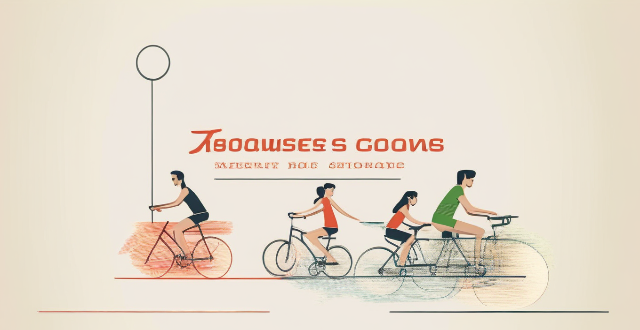
How do sports help in building character and personal growth ?
The text discusses the various ways in which sports can contribute to building character and promoting personal development. It highlights how sports can help develop discipline, promote teamwork, cultivate perseverance, encourage leadership, enhance self-esteem, teach adherence to rules, facilitate social interaction, improve physical health, and teach individuals how to handle pressure. The author emphasizes that the lessons learned through sports participation can translate into valuable life skills that are essential for success both in sports and beyond. Overall, the text suggests that sports offer an array of benefits that stretch far beyond physical fitness and play a significant role in shaping character and fostering personal growth.

What are some fun and unique themes for a family dinner ?
Fun and Unique Themes for a Family Dinner Family dinners can be made even more special with unique themes that foster connections and create lasting memories. Here are some fun ideas: 1. **Cultural Night**: Explore different cuisines and decorate accordingly. Play music from the selected culture. 2. **Movie Night**: Watch a favorite film and discuss it over themed snacks. 3. **Game Night**: Enjoy board games or outdoor activities for some friendly competition. 4. **Fashion Show**: Dress up according to a theme and have a runway walk. 5. **Cooking Competition**: Challenge family members to cook with selected ingredients or work together on a meal. 6. **Science Night**: Conduct safe experiments or learn about space through various activities. 7. **Retro Night**: Decorate and dress according to a past decade, play music, and learn dances. 8. **Sports Night**: Set up a tailgate-style dinner or backyard Olympics for athletic fun.

What are the trends in food festival themes and activities ?
Food festivals have seen a significant shift in themes and activities, focusing on local and sustainable cuisines, celebrating cultural diversity, offering interactive experiences, promoting health and wellness, and integrating technology. These trends aim to cater to changing consumer preferences and interests while providing unique experiences for attendees.

How has the portrayal of sports evolved in literature over time ?
This text discusses the evolution of sports in literature, highlighting how the portrayal of sports has changed over time. The author explains that in ancient literature, sports were seen as a symbol of strength and heroism, while in medieval literature, they showcased the skills of knights and noblemen. With the Renaissance, sports became more realistic and focused on technique, and modern literature has used sports to explore complex issues like identity and social inequality. Overall, the text emphasizes the importance of sports in literature throughout history.
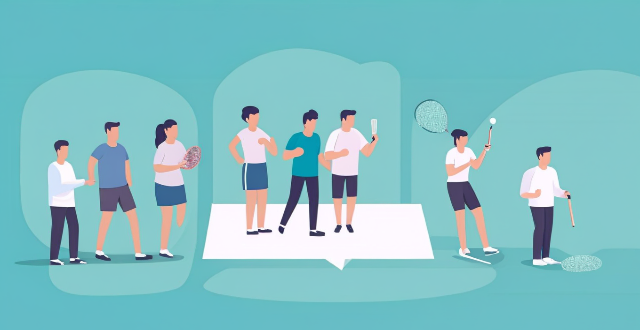
What is the role of sports in character building during adolescence ?
The article discusses the significant role sports play in character building during adolescence. Sports contribute to physical health and self-discipline, teamwork and social skills, goal setting and perseverance, responsibility and time management, emotional intelligence and stress management abilities. Engaging in sports not only benefits young individuals physically but also shapes their personality and values, preparing them for success in all aspects of life.
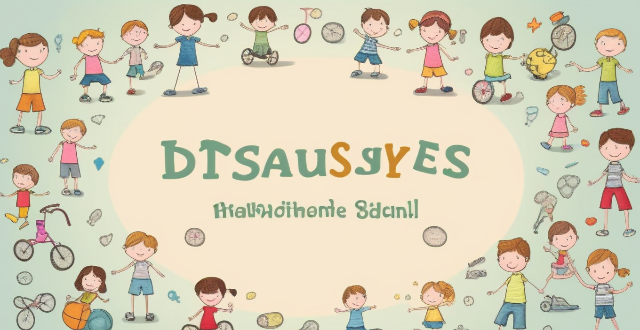
What role do sports play in character building for children ?
The article discusses the various ways in which sports contribute to the overall personality development of children. Sports ensure physical health and well-being, teach valuable life skills such as teamwork, leadership, communication, and goal setting, impact emotional development by boosting self-esteem, teaching resilience, and handling pressure, provide opportunities for socialization, and play a crucial role in moral development by instilling values such as integrity, respect, and responsibility. The author concludes that sports are not just about physical fitness but are powerful tools for character building in children.

How do I select an appropriate gift for a wedding anniversary ?
Selecting the perfect wedding anniversary gift involves considering traditional themes, personalization options, the couple's tastes, and budget. Traditional themes offer a range of material suggestions for each year, from paper to gold, symbolizing growth and longevity in a marriage. Personalization, such as monograms or custom engravings, adds a special touch to any gift. Tailoring gifts to the couple's hobbies, interests, or decor style ensures they will appreciate and use the gift. Budgeting is also crucial; thoughtful gestures can be affordable, while luxury items make grand statements. Ultimately, the best gift celebrates the couple's love story and milestones, coming from a place of heartfelt consideration.

What is the relationship between sports and creativity in literature ?
In literature, sports and creativity often intertwine to enrich storytelling. Sports provide a backdrop for character development, narrative structure, and themes that mirror life's struggles. Creative writers use literary devices and unique perspectives to enhance the portrayal of sports, offering emotional connectivity with readers. Examples like "Ender's Game," "Farewell to Arms," and "Personal Best" demonstrate how sports can serve as metaphors and settings for deeper explorations of human nature and society. This intersection allows authors to craft works that resonate on multiple levels, transcending genre boundaries.
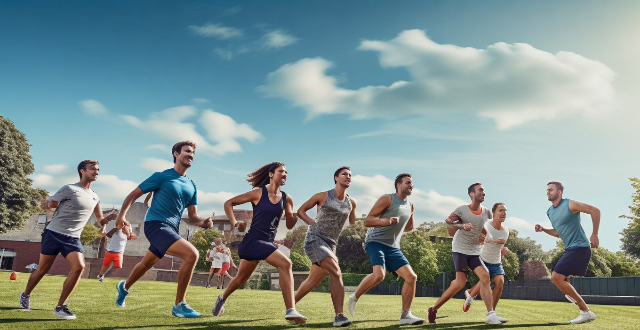
What role does sports play in shaping an individual's personality and character ?
Sports play a crucial role in shaping an individual's personality and character. They foster the development of social skills such as teamwork, leadership, and resilience. Participating in sports also builds self-confidence through achievement and overcoming fears. Additionally, sports promote discipline and time management by requiring consistent practice and training schedules. Goal setting is another important aspect of sports that teaches individuals about planning and focus. Finally, sports encourage healthy lifestyle habits by promoting physical fitness and raising awareness about proper nutrition. Overall, sports provide valuable experiences that contribute to personal growth and success in various aspects of life.

What character traits are essential for effective student leadership, and how can they be encouraged ?
Effective student leadership requires character traits like integrity, responsibility, empathy, courage, and adaptability. These traits help leaders inspire, motivate, and guide peers towards common goals. Encouraging these traits involves leading by example, open communication, ethical decision-making, assigning tasks, following up on progress, recognizing effort, active listening, promoting diversity, developing emotional intelligence, risk-taking opportunities, conflict resolution techniques, building a supportive environment, enhancing problem-solving skills, promoting continuous learning, and establishing feedback mechanisms.

Are there any apps or tools that can help me track my progress in understanding different texts ?
The text discusses various apps and tools that can help users track their progress in understanding different texts, including Reading Comprehension Apps like Quizlet and Khan Academy; Productivity Tools for Text Comprehension such as Evernote and Trello; Online Tools for Text Analysis like SparkNotes and CliffsNotes; and Personalized Learning Platforms like Adaptive Learning Systems. These resources provide features such as flashcards, video tutorials, annotations, note-taking, project boards, database views, plot summaries, character analysis, chapter-by-chapter breakdowns, close reading, personalized pathways, real-time feedback, and reading logs to aid comprehension and monitor progress.

How do sports movies reflect societal attitudes towards health and fitness ?
Sports movies often reflect societal attitudes towards health and fitness, showcasing themes of motivation, teamwork, overcoming adversity, health awareness, and gender equality. These films can inspire viewers to push their limits, work together, persevere through challenges, prioritize their well-being, and support gender equality in sports.

In what ways do strong female characters in literature shape our perceptions of women's roles and capabilities ?
Strong female characters in literature challenge traditional gender roles and showcase the capabilities of women beyond their stereotypical representations. They inspire women readers, defy gender stereotypes, promote diverse representation, celebrate female relationships, break societal barriers, and expand horizons. These characters shape our perceptions of women's roles and capabilities and promote gender equality.

How do celebrity book clubs differ from regular book clubs ?
Celebrity and regular book clubs both aim to promote reading but differ in their goals, accessibility, interaction style, and impact on readers and authors. Celebrity clubs are open, use social media, and have a wide reach, while regular clubs are more private, engage in deeper discussions, and foster close-knit communities.
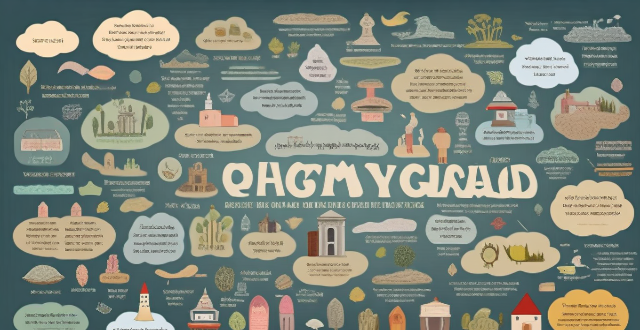
What role does media play in shaping our perception of cultural diversity ?
This article explores the significant role of media in shaping our perception of cultural diversity. It highlights how media exposure to different cultures, representation of cultural diversity, and influence on attitudes and beliefs contribute to understanding and appreciation of cultural diversity. The article encourages critical thinking and active seeking out of diverse perspectives to promote a more inclusive society.

What role does audience feedback play in shaping future live streaming sessions ?
The article explores the crucial role of audience feedback in shaping future live streaming sessions. It discusses the importance of feedback in improving content relevance, enhancing interactivity, technical optimization, and building a community. The article also suggests strategies for implementing feedback collection, such as surveys, live chat analysis, social media engagement, and email subscriptions. Additionally, it emphasizes the need for data-driven decisions, transparency with changes, and an iterative approach to continuously improve live streaming sessions.

What are some popular books discussed in celebrity book clubs ?
The text provides a list of eight books that have been popular in celebrity book clubs. Each book is summarized, including its author, genre, and a brief summary of its content. The books cover a range of topics, from personal memoirs to historical fiction, and explore themes such as identity, race, family, education, and resilience.

What are some famous examples of sports-inspired art ?
Sports have been a significant source of inspiration for artists, resulting in various forms of art that capture the essence of athleticism and competition. Notable examples include Rubens' "The Chariot Race," Degas' "Olympia" series, Neiman's painting of the Muhammad Ali vs. George Foreman match, Sennwald's photographic series on Wilt Chamberlain, Banksy's Tour de France-inspired graffiti, Goya's "The Boxer," Darnell's oil paintings of Michael Jordan, Orzechowski's watercolors of female Olympians, Djordjevic's abstract sculpture of speed skaters, and Botero's soccer player sculptures and paintings. These works showcase the dynamic nature of sports and the human spirit through various artistic styles and mediums.

What are the names of the songs in the singer's new album ?
The new album by the singer is a collection of original songs that display their unique style and artistic vision. The album has a diverse range of genres and themes, reflecting the singer's versatility as a musician. The list of songs includes "Introspection," "Revolutionary Love," "Euphoria," "Broken Dreams," "Lost in Paradise," "Unspoken Words," "Nightfall," "Rise Up," "Forever Young," and "Outro." Each song on the album tells a unique story, inviting listeners to immerse themselves in the singer's world of music.

How can I find an iPhone wallpaper that matches my style or personality ?
Finding an iPhone wallpaper that matches your style or personality can be a fun and creative process. To help you find the perfect wallpaper, identify your style or personality, use online resources, search for specific themes or keywords, create your own wallpaper if necessary, and save and organize your favorites. With these tips, you'll be able to find the perfect wallpaper that reflects who you are and enhances your iPhone's appearance.

What is the most popular sport in Hollywood movies ?
Boxing, basketball, football, and baseball are among the most popular sports depicted in Hollywood movies. These films often explore themes of perseverance, determination, teamwork, and redemption, making for compelling storytelling.

How can mind maps help in revising large amounts of information ?
Mind maps are a useful tool for organizing and revising large amounts of information. By visualizing complex information, identifying key themes and relationships, organizing thoughts, improving memory retention, and facilitating creative thinking, mind maps can help learners better understand and retain information. To use mind maps effectively, choose a central idea or theme, create branches for subtopics, add details and examples, connect related ideas, review and refine the map, and use it as a study tool.